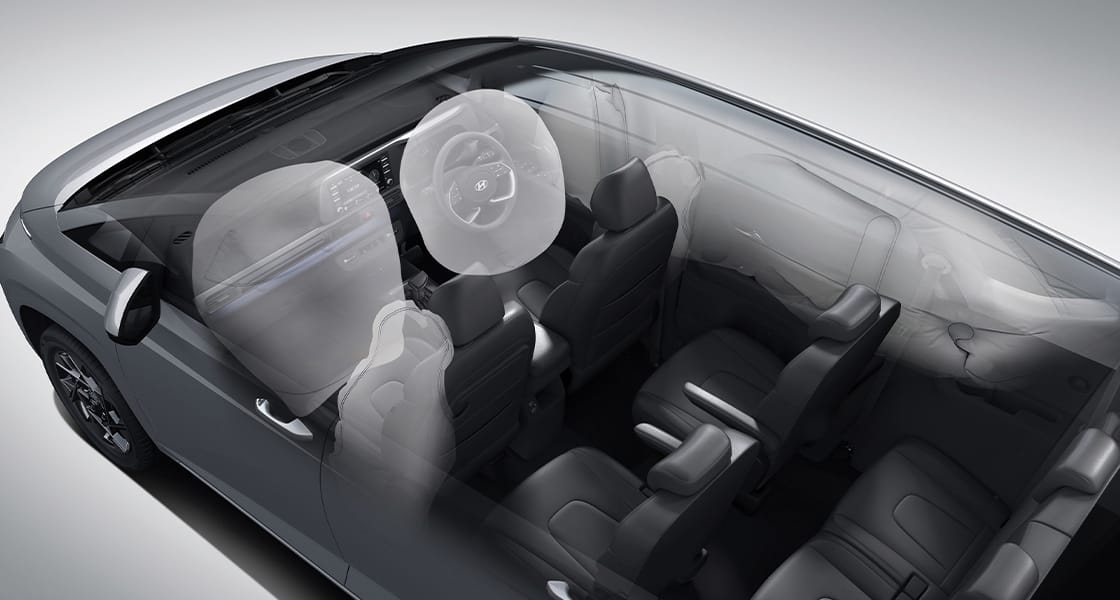Car airbags are a critical safety feature designed to protect drivers and passengers during a collision. But what happens if the airbag indicator light suddenly illuminates on the dashboard? This is not a sign to ignore. Understanding the meaning of the airbag indicator and knowing how to address it can be a lifesaver. Let’s dive deeper to ensure we’re always #SafeDriving and confident behind the wheel.
Understanding the Car Airbag Indicator
When you start the car, all dashboard indicator lights typically light up briefly as part of a system check. The airbag indicator, often depicted as an icon of a person with an airbag, should turn off within a few seconds. However, if this light stays on or flashes, it signals an issue with the airbag system function that requires immediate attention.
Important: Never ignore an illuminated airbag indicator. It indicates that your safety system is not functioning optimally and could pose a risk during an accident.
The airbag indicator can display different patterns. A constantly lit light typically means the airbag system is deactivated and won’t deploy in a crash. A flashing light indicates an error code that requires diagnosis with specialized equipment. Take your car to an authorized service center for inspection promptly.
Causes of Airbag Indicator Illumination and Solutions
Common reasons for the airbag indicator light turning on include:
- Faulty airbag sensor: A dirty or damaged sensor may fail to detect impacts correctly. Solution: Replace the sensor at an authorized service center.
- Loose cables or connectors: Vibrations or improper seat installation can disconnect wiring. Solution: Cleaning or repairing connectors may resolve the issue.
- Weak battery or unstable voltage: The airbag system relies heavily on the electrical system. Solution: Replace the battery if necessary to ensure normal operation.
- Damaged airbag control module: This module manages the entire airbag system. Solution: Replacement at an authorized service center with specialized tools is required.
Note: Do not attempt to disconnect cables or repair the system yourself without technical expertise, as this could cause further damage.
Maintenance and Care for the Airbag System
To keep the airbag system in optimal condition:
- Conduct regular inspections at an authorized service center as per the maintenance schedule.
- Avoid modifying the electrical system without consulting a technician.
- Periodically check cables and connectors under the seats.
- Be alert for unusual noises or vibrations from the airbag area.
- Avoid installing accessories that may interfere with airbag sensors or wiring.
The airbag system typically has a lifespan of 10–15 years. After this period, a thorough inspection is recommended to ensure reliability.
Airbag Technology in Modern Hyundai Vehicles
Hyundai equips its modern vehicles with a comprehensive airbag system, including front, side, curtain, and driver’s knee airbags. Highly precise multi-directional sensors detect the intensity and direction of impacts within milliseconds, ensuring timely airbag deployment for maximum protection.
Some Hyundai models also feature a center airbag to prevent passenger-to-passenger collisions during side impacts, enhancing safety further.
Hyundai’s airbag system is integrated with active safety features like automatic braking and stability control, working together to minimize accident risks and their impact.
Safety is not just an option but a necessity. Never ignore an illuminated airbag indicator on your dashboard. Promptly have it checked at an authorized Hyundai service center to ensure the airbag system functions properly.
Your car’s airbag is a reliable companion, safeguarding you and your family on every journey. Ensure the airbag indicator is always in normal condition for safe and confident driving.
Maintain your car’s airbag system with routine care and avoid haphazard modifications. Prioritize safety, because a safe journey is a pleasant journey.
